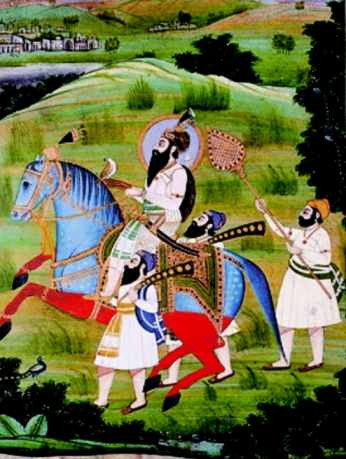
AHMAD YAR KHAN TIWANA (d. 1829), second son of Khan Muhammad Khan, the Tiwana chief of Mittha Tiwana, in Shahpur district, measured swords with Sikhs more than once during Maharaja Ranjit Singh`s time. Ahmad Yar Khan revolted against his father and, having succeeded in attracting most of the tribe to his side, compelled him to surrender the chief ship to him. In 1817, Maharaja Ranjit Singh dispatched troops under the command of Misr Divan Chand against the Tiwana chief at Nurpur Tiwana. The fort was conquered and Ahmad Yar Khan ran away to Jhandavala, situated in the Mankera territory.
- 1
- 2






